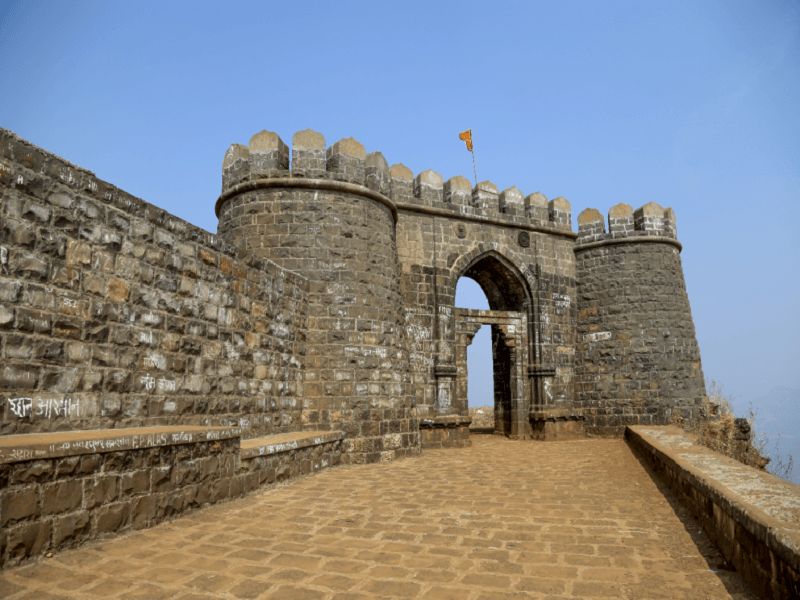Nestled amidst the majestic Western Ghats of Maharashtra, Vishalgad Fort stands as a silent sentinel to centuries of history, valor, and breathtaking natural beauty. This formidable fort, with its tales of Maratha glory, has become a treasured destination for history enthusiasts, trekkers, and those who seek solace in the lap of Mother Nature.
History of Vishalgad Fort:
Vishalgad Fort’s history is a tapestry woven with threads of valor and resilience. Built in 1058 CE by the Chalukya dynasty, it later came under the control of the Marathas, particularly the legendary Chhatrapati Shivaji Maharaj. The fort played a pivotal role in the Maratha Empire’s history.
Architecture and Structures:
The architecture of Vishalgad Fort is a testament to military genius. It boasts sturdy stone walls, massive bastions, a citadel, and an imposing entrance. A highlight is the Hanuman temple within the fort, showcasing the spiritual aspect of Maratha culture.
Cultural and Historical Significance:
Vishalgad Fort resonates with the echoes of the past. Besides the Hanuman temple, it houses several other temples and a reservoir, reflecting the diverse cultural tapestry of the region. The fort’s elevated location offers awe-inspiring views of the surrounding Western Ghats.
Visitor Information:
Accessing Vishalgad Fort is relatively straightforward, with Kolhapur being the nearest city. The fort is open year-round, and visitors are required to pay a nominal entry fee.
Best Time to Visit:
The best time to explore Vishalgad Fort is during the post-monsoon and winter months, from October to March. The cool weather enhances the trekking experience, and the landscape is lush and vibrant.
Nearby Attractions:
The Western Ghats around Vishalgad offer ample opportunities for treks and nature walks. Kolhapur, renowned for its cultural heritage and cuisine, is a short drive away.
FAQs (Frequently Asked Questions):
1. How can I reach Vishalgad Fort from Kolhapur?
Vishalgad Fort is approximately 74 kilometers from Kolhapur, and the journey by road takes around two hours. You can hire a taxi or take a bus to reach the fort.
2. Is there an entry fee to visit Vishalgad Fort?
Yes, there is a nominal entry fee for visitors to Vishalgad Fort. This fee contributes to its maintenance and preservation.
3. Are guided tours available for Vishalgad Fort?
Yes, local guides are often available at the fort’s entrance. They provide informative tours, sharing insights into the fort’s history and significance.
4. Is Vishalgad Fort suitable for trekking beginners?
The trek to Vishalgad Fort is considered moderately challenging, with steep sections. While beginners can attempt it, it’s advisable to be in good physical condition.
5. What is the significance of the Hanuman temple within the fort?
The Hanuman temple is a spiritual highlight of Vishalgad Fort. It reflects the reverence for Lord Hanuman in Maratha culture and provides a peaceful retreat within the fort.
Conclusion:
Vishalgad Fort is more than just an ancient fortification; it’s a portal to an era of valor and legacy. As you tread its rugged paths, stand atop its mighty walls, and immerse yourself in its historical and natural splendor, you’re not just visiting a fort; you’re embarking on a journey through time. Vishalgad Fort is where history meets nature, and where every stone tells a story of Maharashtra’s past.
Featured Image – https://www.trawell.in/maharashtra/kolhapur/vishalgad-fort
